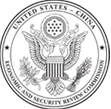Research
China is the largest market for trafficked wildlife products. Its demand has been an important factor leading to declines in iconic species such as elephants and big cats, as well as in lesser-known species like pangolins. Although China’s legal regime establishes protections for many endangered species, loopholes regarding captive breeding and antitrafficking enforcement create opportunities for the illicit wildlife trade to flourish. Success in combating this trade varies by species: regarding the trade in elephant ivory, for example, a confluence of domestic and international pressure culminated in a U.S.-China joint ivory ban, completed in early 2018. Though indications following the ban appear promising, China’s recent partial reversal of its ban on the use of rhino horn and tiger bone highlights continuing shortcomings in its effort to combat wildlife trafficking.
Research
This issue brief provides an update to the Commission's February 2017 report on fentanyl flows from China, examining the progress of negotiations between U.S. and Chinese law enforcement authorities. Although the Chinese government has taken steps to reduce the manufacture and export of fentanyl-like substances, China remains the largest source of illicit fentanyl and fentanyl-like substances in the United States. To combat these flows, U.S. authorities have begun taking legal actions against known Chinese drug traffickers, including announcing the first ever indictments and sanctions against Chinese fentanyl traffickers.
Annual Report
The 2018 Annual Report to Congress covers an expansive array of topics including the roots of U.S.-China trade tensions, the Belt and Road Initiative and China’s moves toward a global leadership position, and the race to set next generation connectivity standards.
Research
The Internet of Things (IoT)—the interconnection of physical and virtual things via information and communication technologies—is being applied to virtually every sector from smart thermostats in households to swarms of autonomous drones in the battlefield. This report, contracted by the USCC and authored by SOS International, outlines China’s state-led approach to IoT development, assesses the implications for the U.S. economy, national security, and the privacy of U.S. data, and makes recommendations for U.S. policymakers. China’s concerted, state-led approach, including ongoing efforts to influence international IoT standards, has put China in a position to credibly compete against the United States and other leaders in the emerging IoT industry. China’s research into IoT security vulnerabilities and its growing civil-military cooperation raise concerns about gaining unauthorized access to IoT devices and sensitive data. In addition, China’s authorized access to the IoT data of U.S. consumers will only grow as Chinese IoT companies leverage their advantages in production and cost to gain market share in the United States based on the terms of use and sweeping Chinese government data access powers.
Press Release
The Internet of Things (IoT)—the interconnection of physical and virtual things via information and communication technologies—is being applied to virtually every sector from smart thermostats in households to swarms of autonomous drones in the battlefield.
Research
The United States maintains close cultural, economic, and security ties with countries in Latin America and the Caribbean (LAC). While the United States remains the largest economic and security partner in LAC, in the last decade China has rapidly deepened its economic, diplomatic, and military engagement to become the region’s largest creditor and second-largest trading partner. China’s efforts in the region are driven by four key objectives: (1) ensuring its access to the region’s abundant natural resources and consumer markets; (2) gaining LAC support for its foreign policies; (3) shaping LAC perceptions and discourse about China; and (4) gaining geopolitical influence in a region geographically close and historically subject to U.S. influence. Closer ties with China may reduce U.S. influence in the region; they can also reinforce the region’s overreliance on highly cyclical exports and create unsustainable debt burdens for some LAC countries, which China could use for political leverage. This report examines China’s objectives in the region, its economic, diplomatic, and military and security engagement in Latin America and the Caribbean, and the implications of its expanding regional presence and influence for the United States.
